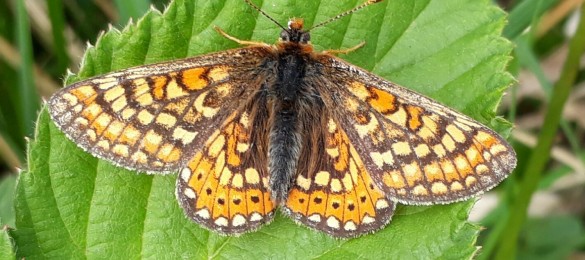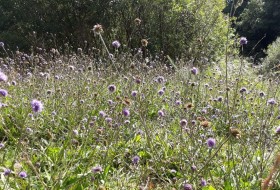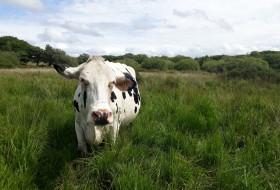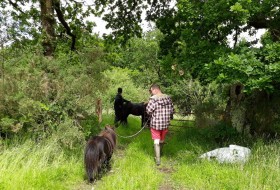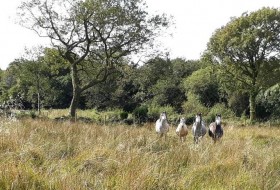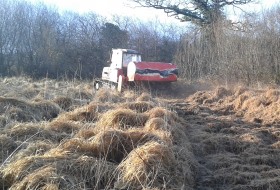Caeau Mynydd Mawr Marsh Fritillary Project
Page updated on: 05/02/2025
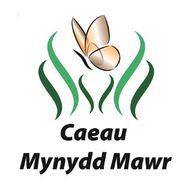
The Marsh Fritillary (Euphydryas aurinia) is a native butterfly which has become increasingly scarce, so much so that it is protected by law.
Cross Hands and the surrounding area holds one of the last remaining strong populations in Britain. The adult butterfly can be seen flying during May and June, when it lays eggs on the leaves of the Devil’s Bit Scabious plant. The eggs then hatch in late summer and the caterpillars group together to form ‘larval webs’, which can be seen in August and September. The caterpillars then hibernate, emerging again in February.
Please get in contact if you would like to find out more about the project, if you’re interested in visiting one of our sites, or would like to help out.
Light summer grazing with cattle, ponies or horses is ideal, but some sites are managed with occasional mowing, as grazing is not always possible. We work with local livestock owners and PONT (Pori Natur a Threftadaeth - a conservation grazing organisation) to provide livestock to graze sites when needed.
The Cross Hands area is a growth area in Carmarthenshire, identified in the Council’s Local Development Plan and Supplementary Planning Guidance. The project is crucial to ensuring that development can go ahead without having a negative impact on the butterfly. Every development makes a financial contribution to the project, which is then used to obtain and manage habitat for the butterfly.
We currently have in excess of 20 sites in the project area which are managed for the butterfly. Three sites are owned by the project, but most sites are privately owned. We pay an annual management agreement payment to landowners with suitable habitat, comparable to Welsh Government Agri-environment Schemes. Funding is also available for work needed to manage sites, such as fencing to re-introduce grazing, or mowing to restore fields which have become overgrown.
We work closely with landowners, ensuring management fits in with landowner’s wishes and effectively provides habitat for the butterfly. Sites range from fields on small holdings to areas of large commercial farms.
Although our focus is the Marsh Fritillary butterfly, management supports a wide range of other species (some of which are also endangered), and provides green spaces between urban areas - some of which are accessible by Public Rights of Way. We are always keen to involve the local community and host visits from schools, local groups and community Councils. We also have help from local volunteers.
The Caeau Mynydd Mawr project has been recognised as an innovative approach to offsetting the pressures of development on sensitive species and habitats: In 2017, we received a TIC (Transformation, Innovation and Change) award from Carmarthenshire County Council, were highly commended in the RTPI (Royal Town Planning Institute) Wales planning awards and in 2018 won the national RTPI award for planning for the natural environment.
